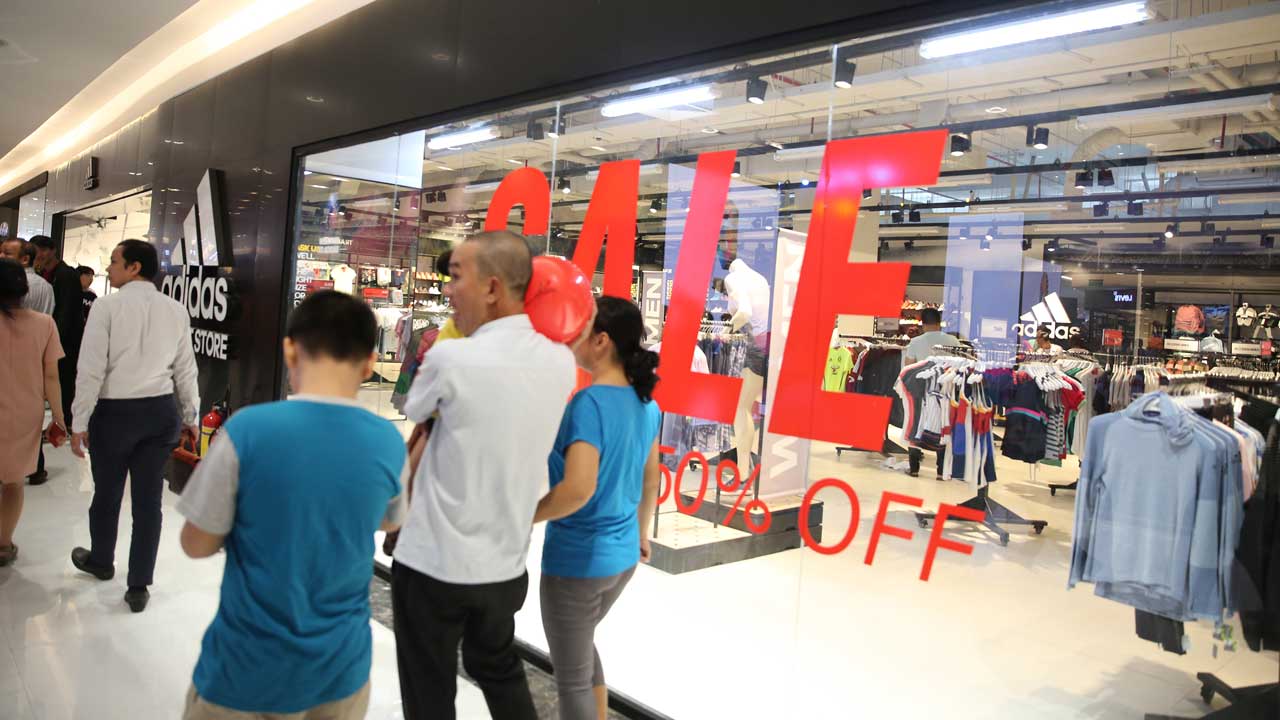Inflation will apparently become one of the key words of 2022. As it exerts impact on other macroeconomic variables, while it has to bear pressure and influence from other factors, inflation and its forecasts have aroused bitter controversy among economists and analysts.
In a recent report on Vietnam, Standard Chartered projects the country’s gross domestic product (GDP) growth in 2022 at 6.7% and raises the forecast for 2023 to 7%. However, together with the economic recovery, the bank also argues that inflation may become a big concern for Vietnam this year, predicting the inflation rate at 4.2% for 2022 and 5.5% for 2023.
Concerns and optimism
Confidence in a steady economic recovery as of 2022 is also a new point in the latest report compiled by HSBC. This bank puts Vietnam’s 2022 GDP rate at 6.5% accompanied by improvement of the fundamentals. However, unlike Standard Chartered, HSBC does not lay much emphasis on inflation, saying that it will be still under control although the bank acknowledges the pressure from higher prices will be felt as soon as the economy is really back on track.
A quick glance at reports on Vietnam’s economic situation this year may indicate that while almost all institutions relatively agree on a positive economic recovery, their viewpoints on inflation can be said to be a world apart, which can be mirrored by the conflicting forecasts of Standard Chartered and HSBC.
On the home front, BIDV Securities Company (BSC) comes up with two inflation scenarios, at 4.5% and 3%, relying on prices of oil, food (such as pork) and public services, such as electrical power and healthcare. Meanwhile, Vietcombank Securities Company (VCBS) projects inflation to be between 4-4.5% in 2022. However, it says inflation will still be under control as the authorities have tools in hand to stabilize prices.
VNDirect contends that although inflation may surge in 2022, it is not necessarily a source of worry. This financial institution puts the average consumer price index (CPI) at 3.45%, lower than the target of 4% set by the Government. Likewise, Rong Viet Securities Corporation (VDSC) predicts this figure at only 3.8%, mainly caused by food and construction price hikes. Mirae Asset Securities Vietnam shares the same view and sets the 2022 inflation at under 4%.
Demand pull and cost push
Basically, Keynesian economics divides inflation into three categories, including (i) demand pull inflation (when demand surpasses supply); (ii) cost push inflation (when prices of input materials soar and many businesses go bankrupt, which results in a decline of total supply; and (iii) built-in inflation (when workers try to march their salaries with inflation rate and companies add the increase to product prices and create the wage-price spiral.)
In the meantime, from the viewpoint of monetarism, the most crucial factor which causes inflation or deflation is the speed of money supply (increase or decrease), as well as monetary cycle. Proponents of monetarism also believe that fiscal policy or government spending and taxes are of no use in inflation control.
As per predictions of 2022 inflation, the majority of negative viewpoints contend that inflation may be subject to both supply and demand, which means a combination of demand pull and cost push, especially when compared to the low level in 2021.
Precisely, a prolonged pandemic will keep production and trading stagnant, failing to return to the normal level. At the same time, disrupted supply chains have yet to recover and rising transport costs and surging commodity prices will raise the input costs, forcing businesses to transfer the costs to consumers or face bankruptcy.
A look at the number of companies compelled to temporarily stop operation over the past two years shows that of the total of 101,552 (statistics provided by the General Statistics Office – GSO), 46,592 were in 2020 (1.6 times higher than in 2019), and 54,960 were in 2021, 18% higher than in 2020. More than 34,000 businesses completed their dissolution procedures in 2020 and 2021. Therefore, if the remaining businesses are not provided with support, or the economy fails to be back to normalcy to attract new companies, the risks of shortage of supply in the future cannot be ruled out.
On the demand side, the prospect of economic recovery and development is high, plus expectations of Vietnam’s continuity of loose monetary policy via low bank interest rates and high credit growth as well as strong inflows of foreign investment. As a result, demand from the private sector is forecast to grow robustly this year.
 Conflicting viewpoints
Conflicting viewpoints
However, many analysts believe they have ample evidence for the scenario in which despite high pressure, inflation may not so risky this year. First, commodity prices are likely to become lower as disrupted supply chains are mended, the pandemic is no longer a deadly threat and the vaccination coverage becomes wide. Recently, many have believed that the Omicron variant with its lower toxication may turn Covid-19 into a seasonal disease.
In addition, central banks worldwide are tightening their monetary policies, with the U.S. Federal Reserves (Fed) at the forefront. The Fed may raise interest rate three times this year. Then, the U.S. dollar may rise sharply and push down prices of many a commodity based on the greenback. Data recently released show that U.S. inflation in December 2021 rose by 7%, the highest level since June 1982, prompting market analysts to bet there is an 85% possibility that the Fed would hike interest rate as early as this March.
At the same time, the dong is expected to continue to be stable against the greenback this year, which means a lower pressure from inflation import and a restriction of impact of escalating world commodity prices. In response to the global tendency of monetary tightening policy, Vietnam may have to avoid further loosening her own policy to avert a burden on inflation. In lieu of it will be a loose fiscal policy.
Eventually, given the current labor crisis caused by the Covid-19 pandemic, higher unemployment rate and workers’ declining income, analysts maintain that consumer demand may remain low and its recovery pace will be slow as people tighten the purse strings due to potential risks.
According to the GSO, the average monthly salary of hired workers in 2021 was VND6.6 million, VND45,000 lower than in 2020. The number of jobless people in 2021 was 1.4 million, an increase of 203,700 over 2020. The unemployment rate during the working age was 3.22%, 0.54 percentage point higher than in the previous year.









